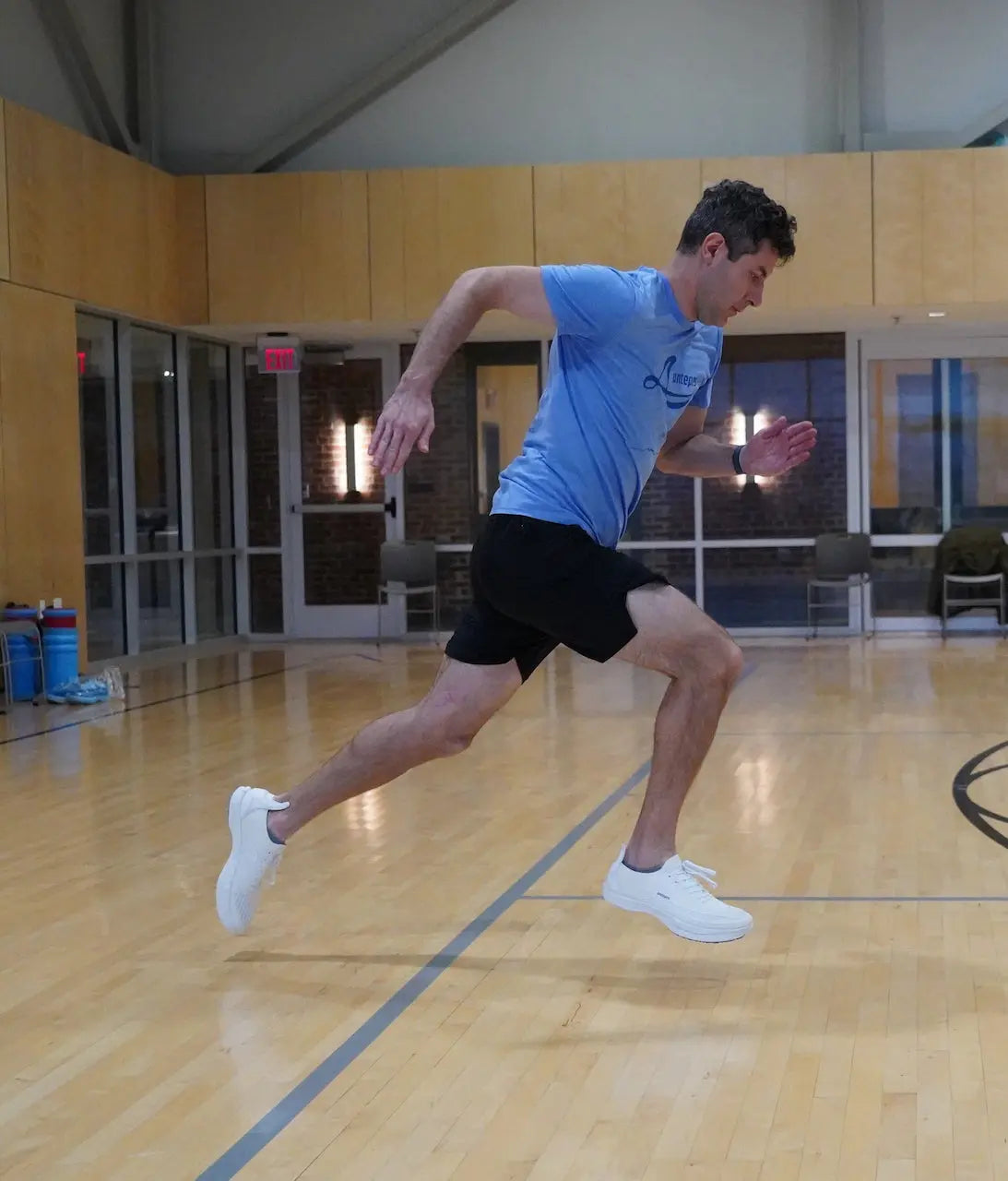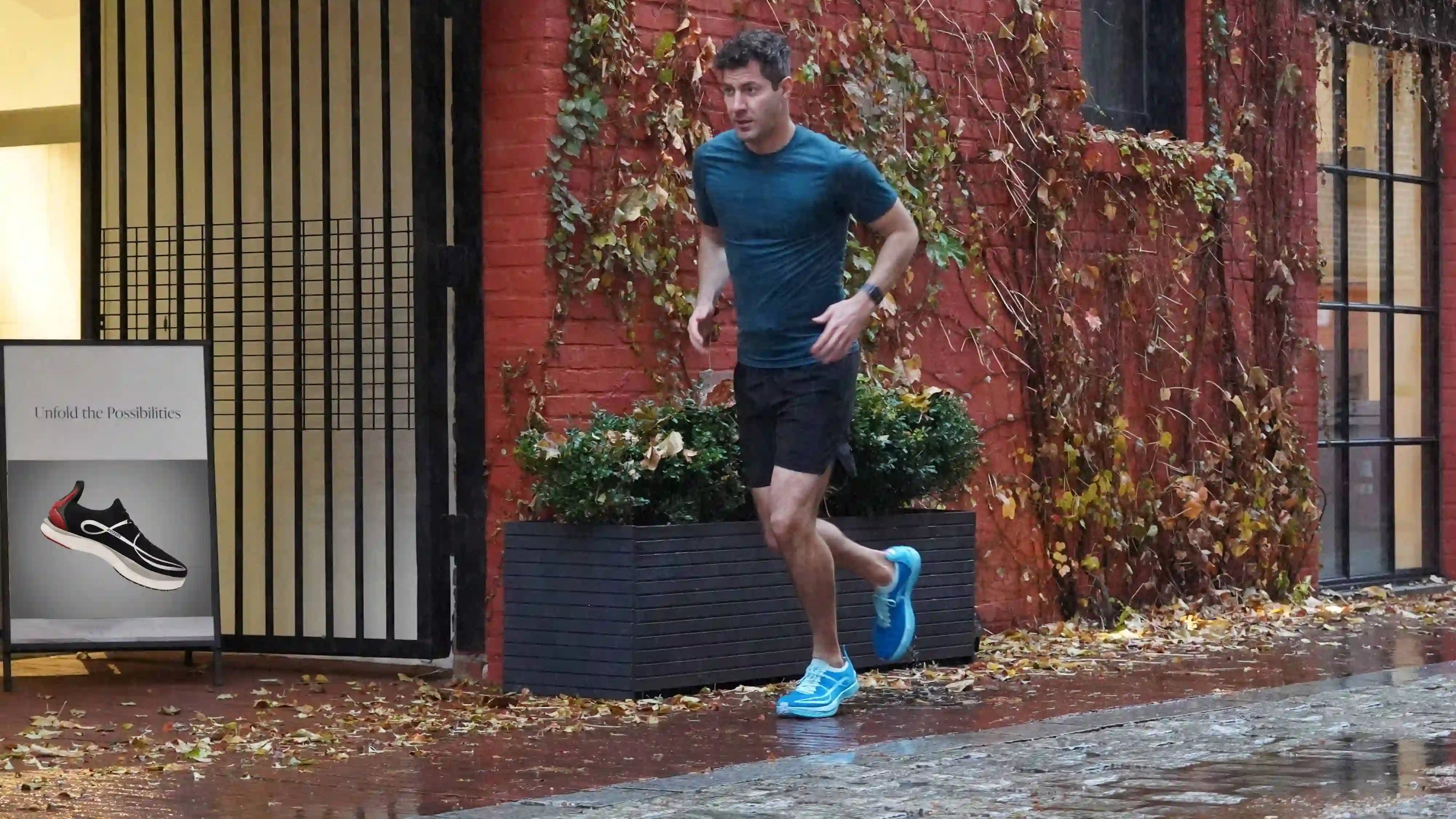WHAT IS MUSCLE RUNNING?
The Muscle Runners™️ help you run entirely on the front-half of the foot, including the forefoot and partially the midfoot.
- Muscle Running™️ is part of the Muscle Runners' DNA and deeply embedded within them -
It is often said that landing and staying on the ground with only the front portion of the foot while running is the natural way to run. If you watch children run, you’ll find that most children forefoot strike. There is a lot of research to suggest that forefoot running contributes to the most natural running form.
Muscle Running™ technology and DNA may take some time to get used to and some extra time for the body to physically adjust and work itself up to. How to get started with the Muscle Runners:
- Start with approaching the ground with the foot dorsiflexed (i.e. pulling the toes up) and strike the ground with the front of the foot's arch and slightly behind the ball of the foot
- Then roll from there onward towards the ball of the foot
- Start lifting the foot from the ball of the foot
- Keep weight off of the toes and only use the toes for balance
- Drive your knee forward and towards your chest until you start feeling your flexors start pulling your leg down. Start dorsiflexing your foot during this motion
- Then drive your foot down and under the center of your mass
- Only push the ground and avoid pulling the ground. If you're pulling then you're over-striding
- Repeat the above


When you run on your forefoot, your body benefits in a number of ways:
First, striking on the forefoot reduces the impact on your joints.
Landing on your forefoot allows your feet, legs, and upper body to distribute and gradually absorb the shock of impact from your running surface. Striking with your heel, on the other hand, sends the shock of impact directly through your leg to important, injury-prone areas of the body, such as the shin, knee, and hip.
Second, striking on the forefoot contributes to a healthier running form.
Many people who strike on the forefoot notice that their running form and running posture improve.
Third, running on your forefoot strengthens important muscles.
Running on your forefoot will strengthen your calves, muscles in your feet, and muscles around your ankle in ways that heel striking could never achieve. If you are new to forefoot running, this strengthening process will increase your capacity for forefoot running and beyond. And if you run long-distance and prefer to continue running long-distance by heel striking, increased muscle strength from forefoot running can improve your long-distance running. Forefoot striking builds muscle, which is why we have coined the term “muscle running!”
How do the Muscle Runners compare to what is on the market right now?
Forefoot running with what is on the market now can be difficult, frustrating, and counter-productive. Overall, forefoot running in current shoes can prevent proper forefoot running form. When a runner tries to land on the forefoot in current shoes, the heel often intrudes upon the forefoot striking process or you would be forced to strike almost on your tippy toes which over time may create fractures in the toe bones. As a result, the traditional shoe doesn’t allow the mid foot to strike the ground, and it is difficult for the runner to roll off onto the ball of the foot. And unlike every other running shoe, antepes MUSCLE RUNNERS incorporate a split Carbon Fiber Plate to give them the stability and flexibility needed for forefoot running. The Carbon Fiber Plates stabilize the metatarsophalangeal joints to provide extra stability and reduce the amount of weight on the toes. The plates stabilize the forefoot and distribute weight to the ball of the foot rather than to the toes.
Antepes were designed to give you every bit of running support a shoe can provide for strengthening muscles and joints. The antepes MUSCLE RUNNERS design is the culmination of over two years of research, development, and experimentation. Every feature, measurement, and material was chosen to provide the best muscle running experience.
The antepes MUSCLE RUNNERS design includes:
- A well-cushioned forefoot sole. Muscle Runners™️ give you cushioning where you need it the most: under the forefoot and the front half of your midfoot. Unlike other running shoes on the market, the majority of cushioning on a pair of antepes Muscle Runners is found where you will strike during a forefoot run. The cushioning is expertly designed to absorb shock from your running surface when your forefoot hits the ground.
- A slim sole at the heel. If you’ve tried running in a traditional running shoe, you likely were frustrated that you couldn’t get a great midfoot and forefoot strike with a bulky heel in the way. antepes MUSCLE RUNNERS eliminate the extra cushioning at the heel to streamline your running experience and add more comfort during your run.
- Stability and flexibility. Flexibility in the foot is essential for forefoot running. That’s why antepes MUSCLE RUNNERS contain a split Carbon Fiber Plate from the midfoot on toward the front. The Carbon Fiber Plate stabilizes the metatarsophalangeal joints, providing extra stability distributing weight to the ball of the foot rather than to the toes.
- A sole ideally shaped for striking on the mid- to forefoot. The sole is precisely curved to facilitate striking in an area between behind the ball of the foot and in front of the arch, and from there efficiently rolling off onto the ball of the foot. The higher stack cushioning in the forefoot allows the calf muscle to stretch slightly farther without overstretching and create a stronger rebound while running.
antepes Products + Knowlegebase
Muscle Runners
Strike and bounce on your forefoot, engage all muscles while running, run better by improving your stride and cadence, and increase your heart rate over a shorter distance and period by shifting the momentum and impact onto your muscles while running
Fascia Crusher
fascia crusher™️ is an intentionally designed massage roller to help you prepare for a MUSCLE RUN™️ and recover therefrom. Unlike most foam rollers, this roller is hard. The hardness is not just meant to target sore muscles but also to target fascia buildup, because fascia buildup can cause pain and hinder running performance. We recommend rolling sore spots with the soft surface of the roller and more intense fascia buildups with the hard surface of the roller







